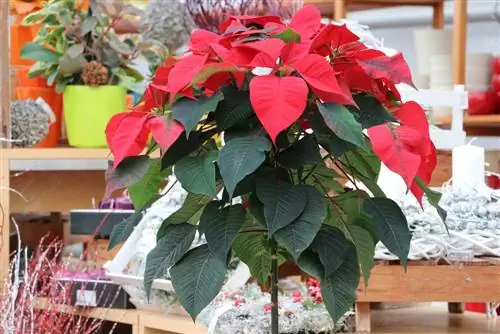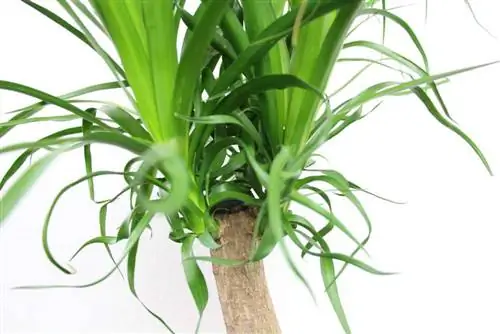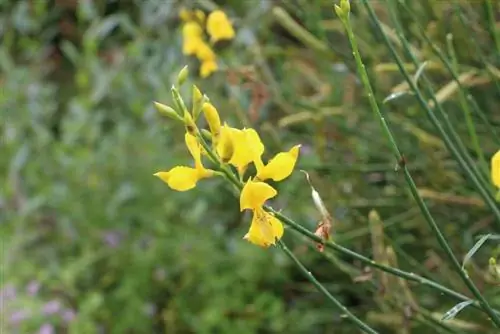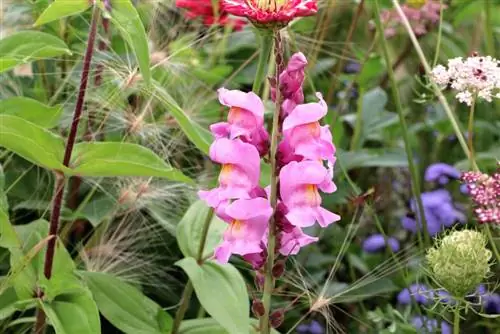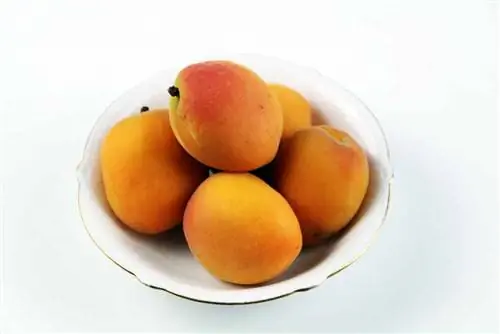- Author admin [email protected].
- Public 2023-12-17 03:39.
- Last modified 2025-06-01 06:48.
When the poinsettia is in full bloom, the winter holidays are not far away and winter temperatures dominate the outdoor area. It is often assumed that the Euphorbia pulcherrima, as a classic Christmas decoration, can handle the cold well. But is that so? Below you will find out whether the poinsettia is hardy, whether special measures are required for overwintering and what else you should pay attention to.
Winter hardy - yes or no?
The Christmas star is not hardy, although it is in “peak season” during the cold season. This is based on its actual origin. It comes from the warm, tropical climes of South and Central America, where temperatures never get close to, let alone below, freezing point. The lowest temperature that poinsettias can withstand without damage is five degrees Celsius, provided it is for a short period of time. Prolonged temperatures of around five degrees Celsius are also not beneficial for lifespan and can have negative consequences.
Ideal temperatures
Advent stars like it warm. While they like to spend the summer outdoors to “take in the pure summer air,” in the winter the sun’s power is not enough to provide them with anywhere near the warmth they need. An ambient temperature at room level of around 21 degrees Celsius is optimal. If good care is taken, the temperature can be between 15 degrees Celsius and 24 degrees Celsius. Temperatures below or above this can cause disturbances in growth and nutrient absorption.
Wintering
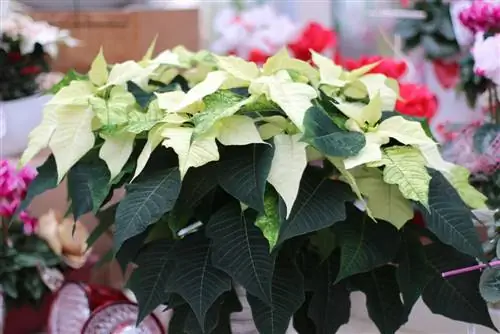
A note about overwintering is only dedicated to plant lovers who have let their poinsettia “oversummer” outdoors over the summer. You have to make sure that your specimen is repositioned in a timely manner to a frost-free place where the temperature is at least five degrees Celsius throughout the winter. As a rule, the night temperatures occasionally drop below the minimum mark in October, so that the ideal time to get in is September, especially since from the beginning of autumn on September 21st, “over-summer” Christmas stars require strict periods of darkness so that flower formation is stimulated. From the beginning of Advent they move into their home living space.
Winter Location
As soon as an Advent star is in full bloom, which is usually the case at the end of November/beginning of December at the latest, the winter location should meet the following conditions:
- Lighting conditions: bright
- Sunlight: no direct sun
- Temperature: warm, as described above
- Avoid drafts (even when airing briefly)
- Avoid direct heating air
Tip:
You should not place poinsettias near a fruit basket. These can develop so-called ripening gases, which lead to faster aging of the plant.
Balcony location
Theoretically, poinsettias can spend the winter on the balcony if there are mild temperatures above five degrees Celsius in a place protected from the wind. If the temperatures fall below this, they must be brought in immediately. When it gets warmer again, they can go out again. However, it should be noted that constant, strong temperature fluctuations can cause problems for the poinsettia. At the latest after they have been brought into the warm for the second time, they should stay inside for the rest of the winter.
Conservatory location
Winter gardens are usually light/sun-flooded rooms. This means that they are not an ideal location for poinsettias to overwinter because the direct sunlight will cause problems for them. If the “glass” winter garden is still desired as a location, appropriate sun protection must be provided, such as sun blinds.
NOTE:
Did you know that Euphorbia pulcherrima is one of the plants to which sensitive people can have an allergic reaction. A location in the bedroom where people spend eight or more hours is not the most suitable option for everyone.
Care
So that the Advent star gets through the winter well and, ideally, continues to bloom long after the Christmas holidays, appropriate care is essential that meets the exact requirements of the poinsettia. Proper care is particularly important if you want it to be enjoyed for several years so that it can enter the rest phase from around February strengthened.
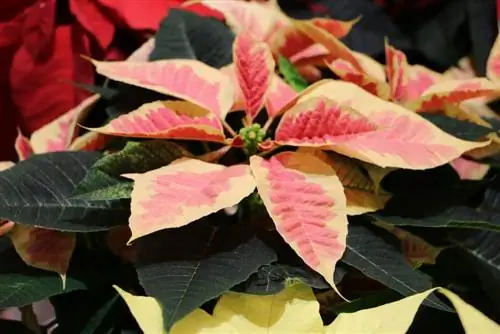
This is what optimal care looks like during the winter months:
- Watering: if the substrate is still slightly moist, but not too wet - it is better to water less, but water more often
- It is essential to avoid waterlogging (pour off the saucer and/or pot after watering)
- Use only lukewarm, low-lime water for watering
- Spray leaves and flowers two to three times a week with low-lime water
- Fertilize every two weeks with conventional flower fertilizer until February/March
- Complete darkness of 12 hours stimulates flower production during winter months
- Repot cheap bulk goods from the supermarket/discounter (ideally in cactus soil)
- Ensure sufficient humidity (dry air attracts pests)
- Cut off yellow or dried leaves/plant parts (otherwise they will draw unnecessary nutrients)
- If necessary, cut back only when the natural leaf fall begins in early spring (if “oversummering” is desired)
NOTE:
Almost all parts of the poinsettia plant are poisonous. The whitish milky sap in particular can cause symptoms of poisoning, which is why care should always be taken to wash hands afterwards and dispose of cut plant parts properly.
Buy in winter
If you want to own a poinsettia just in time for Advent, you should pay attention to a few important details when purchasing. In addition to quality, it primarily affects the location conditions in the store as well as the transport conditions home.
Sales location
Anything that needs to be sold quickly and/or in bulk can often be found right at the entrance in supermarkets/discounters. Here poinsettias are usually only covered in a thin film. Every time the door is opened automatically by customers entering, the cold hits and usually directly on the Advent stars. This can cause damage, which is largely responsible for the poinsettia dying after just a few days. Therefore, poinsettias should only be bought if they are in the middle of the shop, protected from the cold of doors.
Transportation
Because poinsettias are not hardy, cold weather during transport can cause life-threatening damage. In some cases, just carrying something unprotected from the store to the vehicle is enough. If the Christmas stars end up in the cold trunk and remain there while other tasks need to be done, there is a high chance that the Advent star will not survive for long.
That's why poinsettias should be protected from the cold immediately after purchase. As a rule, it is sufficient to place them in a box high enough, for example, so that cold winds in particular do not hit them. They are best stored inside the vehicle for transporting them home. The cold protection should remain in the cold trunk and ideally it will be the shortest route to the poinsettia's new home.

